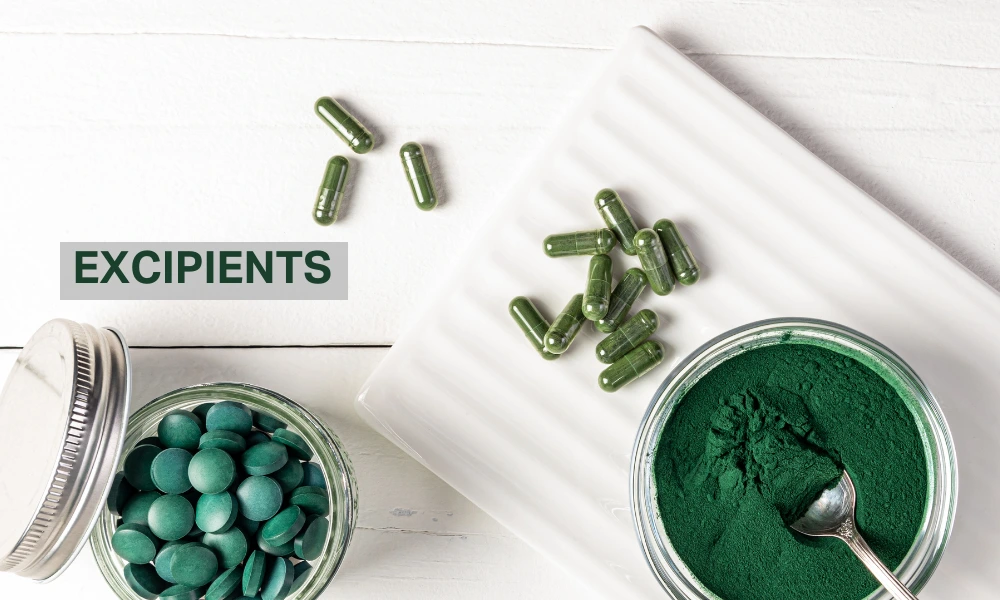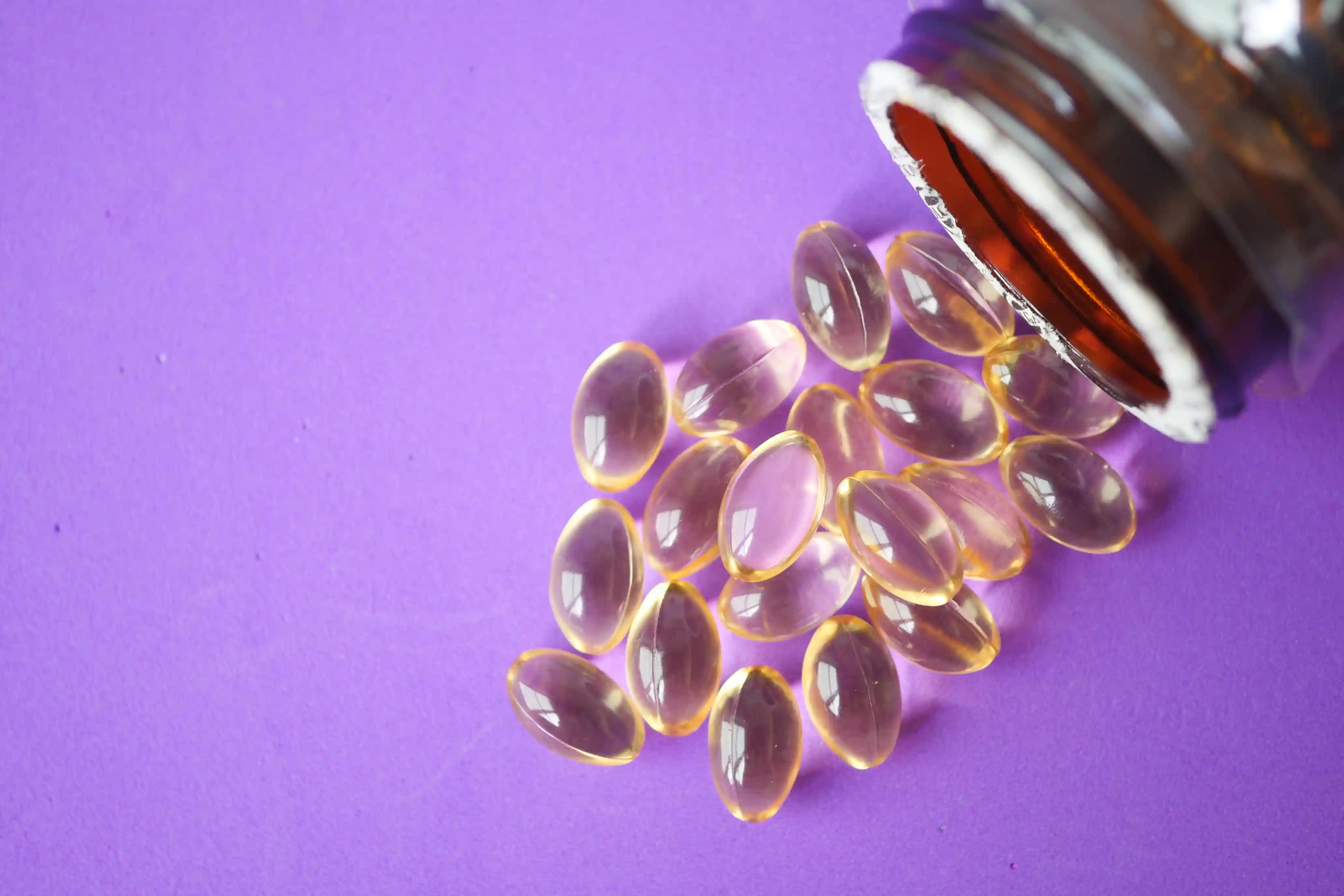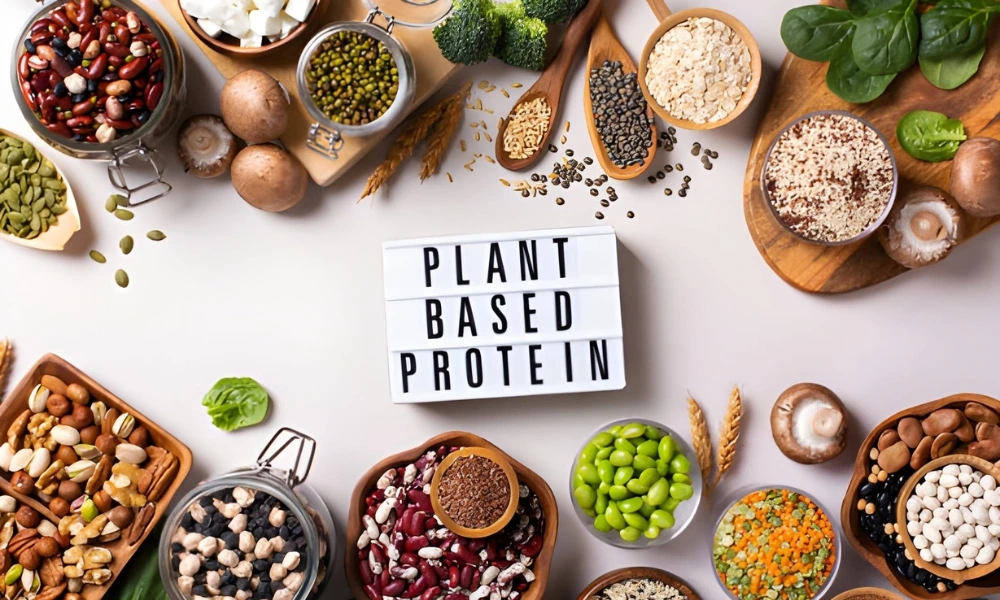The Complete Guide to Excipients of Drugs in Pharmaceuticals

In the ever-evolving world of pharmaceuticals, excipients play a pivotal role in the formulation and stability of drugs. They are non-active ingredients used alongside active pharmaceutical ingredients (APIs) to ensure the safety, convenience, and effectiveness of a medication. From enhancing solubility to improving taste, excipients contribute significantly to the overall quality and utility of pharmaceutical products. As you delve into the realm of drug development, understanding the types and functions of excipients will provide you with invaluable insights into their contributions to health supplement formulations and their substantial impact on the efficacy of medications.
Key Takeaways
- Excipients Are Essential for Drug Stability, Delivery, and Patient Experience: Though non-active, excipients play critical roles in enhancing solubility, preserving stability, improving taste, and ensuring proper drug delivery. They directly influence product quality, patient compliance, and therapeutic outcomes.
- Choosing the Right Excipient Involves Safety, Functionality, and Compatibility: Pharmaceutical excipients are selected based on manufacturing feasibility, regulatory compliance, safety, and compatibility with active ingredients. This careful selection ensures the medication remains stable, effective, and well-tolerated by users .
- Innovation in Excipients Is Advancing Drug Technology: Modern uses of excipients include controlled release systems, abuse-deterrent formulations, and targeted drug delivery—enabling more precise, efficient, and patient-friendly medications that align with evolving healthcare demands.
What are Excipients?
Excipients are non-active substances formulated alongside the active ingredient of a medication. They serve several essential functions: protecting, supporting, or enhancing the stability and bioavailability of the drug. While they do not have therapeutic effects themselves, excipients facilitate the production process, ensure proper dosage, and improve patient compliance by enhancing flavor and texture. By acting as fillers, binders, or even preservatives, they ensure that the drug is delivered safely and effectively, meeting rigorous pharmaceutical standards. Excipients are meticulously chosen by health supplement manufacturers and other professionals to optimize medication performance.
Discover the Different Types Of Excipients in Pharmaceutical
Coating agents
Coating agents are used to apply a protective layer around tablets or capsules. This layer shields the drug from air and moisture, masks its taste, and facilitates easier swallowing. Coatings can also control the release of the drug in the digestive system, enhancing user experience and supporting the drug's efficacy.
Fillers and Diluents
Fillers and diluents are excipients used to increase the volume of a formulation, making it easier to handle. They help in achieving the desired size and shape of tablets or capsules. By ensuring uniform dosage and facilitating manufacturing, they play a crucial role in medication development.
Binders
Binders are crucial excipients that hold ingredients together in a cohesive tablet form. They ensure that the tablet maintains its integrity until consumption. Binders improve the mechanical strength of tablets, allowing them to withstand the rigors of packaging, transportation, and handling.
Flavoring agents
Flavoring agents are added to improve the taste of a drug, making it more palatable for patients. They are especially important in pediatric and geriatric formulations where taste can significantly impact compliance. By masking unpleasant flavors, these agents enhance patient satisfaction and adherence.
Disintegrates
Disintegrates are vital for ensuring tablets break down appropriately once ingested. They help facilitate faster dissolution, improving the absorption rate of the active ingredients. This timely release enhances the drug's therapeutic effect by making it available at the right time and place in the body.
Lubricants
Lubricants in pharmaceuticals prevent components from sticking to equipment during manufacturing. They facilitate the smooth processing of tablets, reducing friction during production. By ensuring consistency and quality, lubricants enhance the efficiency of the manufacturing process and the physical integrity of the final product.
Preservatives and Stabilizers
Preservatives and stabilizers are essential for prolonging the shelf life of pharmaceuticals. They protect against microbial contamination and chemical degradation. By maintaining the integrity and potency of the drug over time, these excipients ensure that patients receive safe and effective medication throughout its intended life span.
How Excipients Affect Supplement Quality and Efficacy
Excipients significantly influence the quality and efficacy of supplements. They affect the drug's stability, absorption rate, and overall patient experience. By enhancing solubility and controlling release, excipients ensure optimal drug performance. Proper ingredient sourcing of excipients supports consistent product quality. Moreover, the choice of excipients can impact patient acceptance due to taste and ease of consumption, thereby affecting compliance and therapeutic outcomes. Understanding the role of excipients helps health supplement manufacturers design products that meet both quality standards and consumer expectations effectively.
Functional Benefits of Excipients
Enhancing Drug Solubility
Enhancing drug solubility is crucial for effective absorption and bioavailability. Excipients like surfactants and solvents facilitate solubility by improving drug dispersion in bodily fluids. This ensures active ingredients are readily available for absorption, maximizing therapeutic effectiveness and potentially reducing dosage frequency.
Improving Taste and Palatability
Improving taste and palatability is vital for patient compliance, especially in children and the elderly. Excipients such as sweeteners and flavoring agents mask unpleasant tastes and odors, making medications more acceptable and easier to consume, thereby enhancing adherence to treatment regimens.
Stabilizing Drug Formulations
Stabilizing drug formulations is key to maintaining the integrity and efficacy of medications over time. Excipients such as antioxidants and preservatives protect active ingredients from degradation due to environmental factors, like light and moisture, ensuring a consistent and reliable therapeutic output.
How are pharmaceutical excipients chosen?
Pharmaceutical excipients are selected through a meticulous process that considers various factors to ensure product quality and patient safety. The choice depends on the physicochemical properties of the drug, the desired formulation type, and manufacturing requirements. Extensive compatibility testing is conducted to prevent any adverse interactions with active ingredients. Regulatory guidelines also play a significant role, as excipients must meet specific safety and efficacy standards. Additionally, consumer preferences are considered, including taste, texture, and potential allergen concerns. Ultimately, the selection process aims to enhance the drug's performance while ensuring it meets the criteria for safety, functionality, and patient acceptability.
The most important considerations in selecting drug excipients include
Manufacturing feasibility
Manufacturing feasibility assesses whether the excipient can be efficiently incorporated into the production process. It considers equipment compatibility, ease of processing, and cost-effectiveness. Ensuring manufacturability supports consistent product quality and reliable scaling from development to large-scale production.
Safety
Safety is paramount when selecting excipients. They must be non-toxic, hypoallergenic, and well-tolerated by patients. Regulatory evaluations ensure excipients do not adversely affect health, supporting safe and effective medication delivery for diverse patient populations.
Functionality
Functionality refers to the specific role an excipient plays in a formulation, such as improving solubility, enhancing stability, or aiding in drug delivery. Selecting the right functional excipient ensures the drug meets therapeutic goals efficiently and reliably.
Compatibility
Compatibility involves ensuring that excipients do not react adversely with the active ingredients or other formulation components. Testing for chemical and physical interactions is crucial to maintain the drug's stability and effectiveness throughout its shelf life.
Regulatory considerations
Regulatory considerations ensure that excipients comply with international safety and efficacy standards set by bodies like the FDA and EMA. These guidelines dictate allowable excipient types and quantities, safeguarding public health and facilitating market approval.
Physical & chemical properties
Physical and chemical properties impact an excipient's performance in a drug formulation. Attributes like solubility, melting point, and stability under various conditions are evaluated to ensure they complement the active ingredients and contribute positively to the overall drug profile.
Sustainability
Sustainability focuses on the environmental impact and ethical sourcing of excipients. Choosing sustainable excipients ensures eco-friendly production processes and supports the industry's movement towards green practices, aligning with global efforts to minimize environmental footprints.
Patient acceptability
Patient acceptability considers factors like taste, texture, and potential allergies. Excipients must enhance the overall experience of taking medication, ensuring compliance and improving therapeutic outcomes by appealing to patient preferences and needs.
Innovative Uses of Excipients
Targeted Drug Delivery Systems
Targeted drug delivery systems use excipients to direct drugs to specific sites within the body, reducing side effects and increasing efficacy. This approach utilizes specialized carriers to improve precision in treatment, enhancing patient outcomes with fewer undesired effects.
Abuse-Deterrent Formulations
Abuse-deterrent formulations incorporate excipients that prevent misuse of medications. By modifying release properties or preventing alteration, these formulations help mitigate the risk of substance abuse, ensuring medications are used safely and as intended.
Controlled Release Mechanisms
Controlled release mechanisms utilize excipients to regulate the release rate of drugs over time. This allows for sustained therapeutic effects with fewer doses, improving patient convenience and adherence to treatment regimens, while also maintaining stable blood concentration levels.
Final Thoughts
Excipients, though often underappreciated, play a pivotal role in the delivery and performance of pharmaceuticals, ensuring products are both effective and user-friendly. As innovation continues in this field, staying abreast of developments becomes crucial for quality product formulation. For those looking to penetrate the supplement market, F.A.M.E. Health Labs offers comprehensive supplement manufacturing services. From concept to creation, they guide you through each phase, guaranteeing your supplement brand’s adherence to industry excellence and regulatory standards.
FAQs
What is the difference between an active ingredient and an excipient?
Active ingredients have therapeutic effects and are responsible for the intended action of a drug. Excipients are non-active substances that support formulation, stability, and delivery. Together, they create safe, effective, and user-friendly medication.
Can excipients cause allergic reactions?
Yes, excipients can cause allergic reactions in sensitive individuals. Common culprits can include dyes, preservatives, or lactose. It's essential for patients to check labels and consult healthcare professionals if they have known allergies to specific substances.
How do excipients affect drug absorption?
Excipients can enhance drug absorption by improving solubility and stability. They aid in the dissolution of active ingredients, ensuring efficient delivery into the bloodstream. Strategic selection of excipients can optimize absorption and maximize therapeutic efficacy.
Can excipients interact with active pharmaceutical ingredients?
Yes, excipients can interact with active pharmaceutical ingredients, affecting drug stability and efficacy. Such interactions must be carefully evaluated during formulation to ensure they do not compromise the medication's safety and effectiveness.




.png)















.webp)



.gif)


